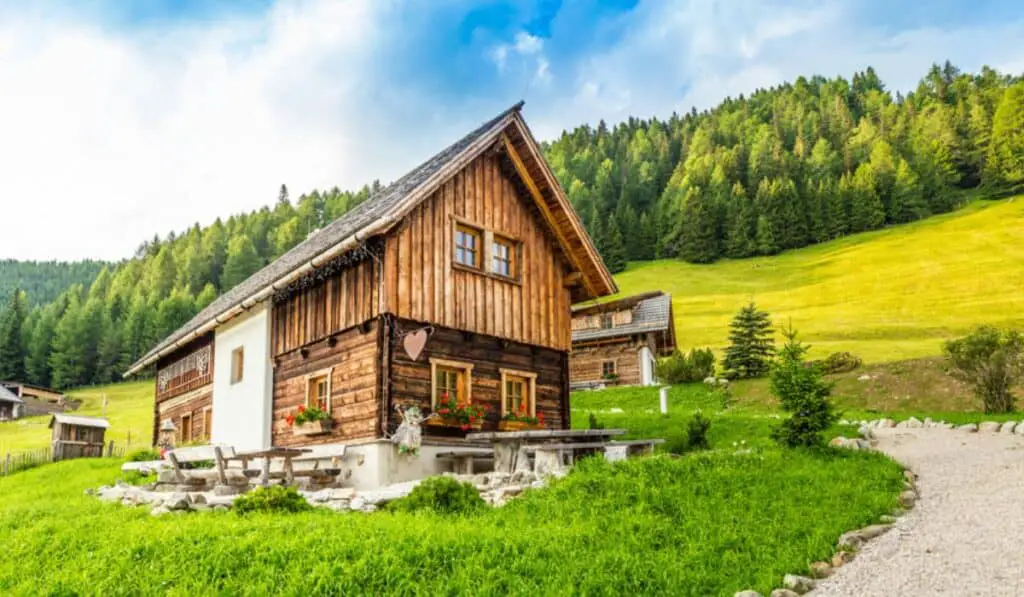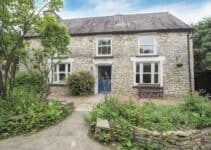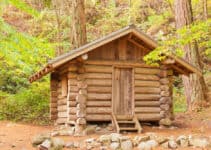Visualise those childhood holidays to Butlins. Or think back, if you’re old enough, to Hi-De-Hi! Remember the dingy chalets that a family would stay in for their summer holiday? Awful, right?
Cottages a quaint and romantic. They suggest solitude, relaxation and an idyllic way of life. With that image in mind, if we were to propose a staycation in a cottage or a chalet, chances are you’d pick the cottage.
But what is the difference between a cottage and chalet? The main difference between a cottage and chalet is their location, size and the materials they are built with. Cottages are typically built from stone and chalet are normally built from wood.
But when we think of chalets in an unfavourable way, we’re not only doing them a disservice, we’re a bit behind the times. Nowadays the chalet has much more glamour and international appeal thanks to Ski Sunday or those of us lucky enough to have seen them on winter holidays in the Alps.
Of course, chalets come in all shapes and sizes whereas cottages tend to be defined by their smaller size. But let’s take a closer look at how they differ.

What is the Difference Between a Chalet and a Cottage?
If you look up the definition of cottages the only thing that’s defined about them is their location, size and the materials they are built with. And most dictionaries agree that the main material for cottages to be built with is stone. If the stone is local so much the better.
Originally cottages were built to house the poorer working class, usually by an employer. And because they needed to be built hastily and thriftily, such cottages were often constructed in materials that were closest to hand.
This could mean lovely mellow stone if you were in Dorset or the Cotswolds or flint if you were in Norfolk.
If stone wasn’t available or was too expensive, cob cottages could be built. These were the cheapest form of cottage construction because of their use of the most basic of ecological ingredients: water and mud – with a bit of straw mixed in.
Cob cottages were more popular in Devon and Cornwall.

How Do Chalets Differ from Cottages?
The building materials of a chalet are a little harder to define. And, the building materials used are typically linked to where they can be found.
If you think of the ski chalets in the Alps, then we’re going to imagine them made of that lovely dark wood. The beautiful dusting of snow on the roof is an added bonus.

In Britain, we may have that residual sense that the chalets are a little on the small and drab side but that view has definitely changed since many more people were able to travel.
Now, even when chalets are part of a holiday in this country, we’re more likely to picture them as the kind found in outward-bound holiday parks.
A wooden chalet gives your accommodation some rustic appeal. And they might even have a steaming hot tub outside if you’re lucky.
And this helps us to define a chalet with greater accuracy. Because it’s more about their function than their building materials.
And it seems wherever they are, their function is primarily for holiday accommodation. So unlike cottages, chalets are designed to be permanently constructed for impermanent habitation.
What Are the Similarities Between Cottages and Chalets?
Unlike a lot of homes, Cottages and Chalets have more in common than things that set them apart.
And the location of cottages and chalets is certainly something they share. Of course cottages are quintessentially British whereas chalets have a more international flair. However, both are usually situated in more remote locations.
Cottages were originally built for agricultural or manual labourers to be as close to their place of work as possible.
This is largely why cottages are really only found in rural areas. Similarly, the function of chalets as homes to facilitate activities, either in the winter for skiing or the summer for hiking in mountainous locations, is what places them in more remote areas.
While size is not necessarily something that both cottages and chalets share, their aesthetic charm is. While there are larger chalets with balconies, hot tubs and multiple floors or more modest single or two-story dwellings, chalets are lovely to look at.
The same applies to cottages. While cottages can be rather grand – the kind found in glossy magazines – they’re usually quaint and have a roses-round-the-door appeal. Their size is an added quality that adds to the cosiness.
Deciding exactly how to define cottage or chalets is a debate that could go on and on. And the ambiguities would keep architects arguing long into the night.
But when it comes down to it, cottages and chalets may look different but they share some key things. They are built for function and those functions mean they are to be found in specific rural areas.
And whether you live in a cottage or a chalet, we’re sure you’ve got a cosy home that will be a source of comfort for many years to come.



